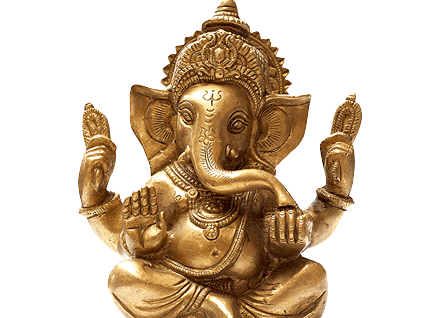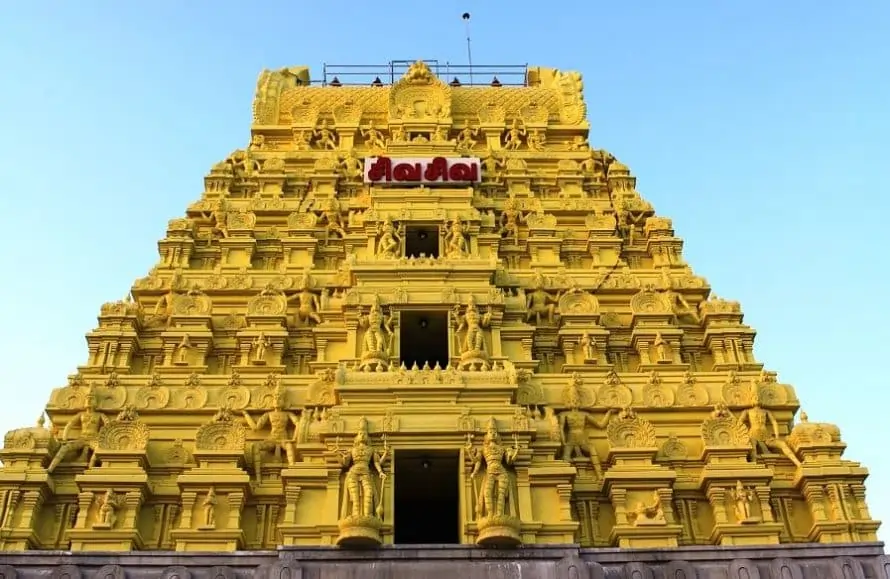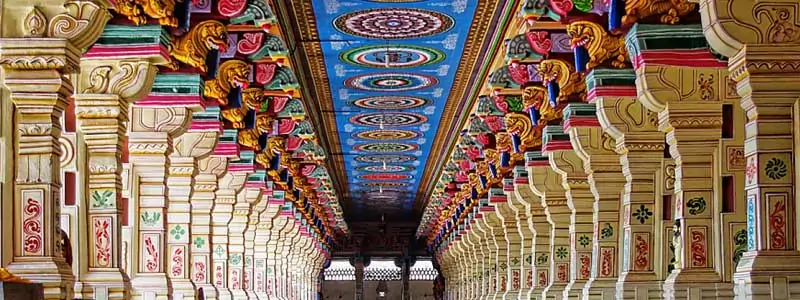20 Best Diwali Rangoli designs to adorn your home
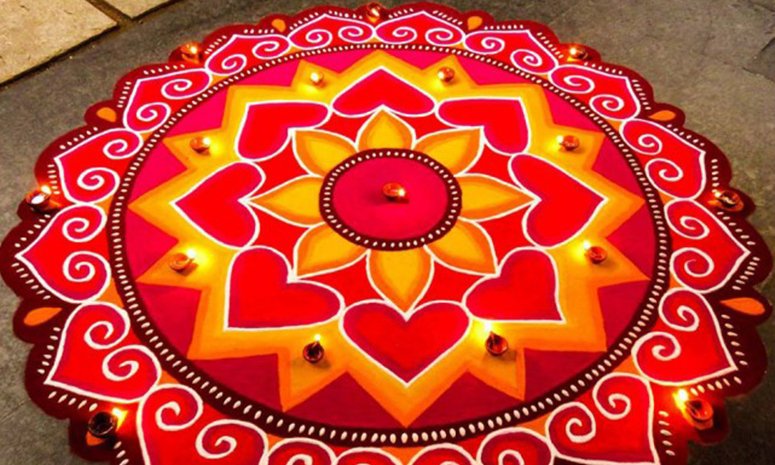

Diwali Rangoli Designs
If you are looking for the best Diwali rangoli designs to adorn your home, look no further. In this article you will find some of the best rangoli designs that are easy to make with a bit of effort and which will give you, your family and guests all the appreciation you are looking for.
Festivals are supposed to bring excitement to our life, which is why people look forward to them and decorate their houses to welcome the positive energy. Diwali is the biggest festival for the Hindus in India, so people prepare themselves and their houses for the festival. People clean their homes and throw away unwanted items and decorate their homes with flowers, lights, and other decorative items. One more very common way of decorating homes is Rangoli.
What is Rangoli?
Rangoli is an age-old and traditional art form, which originated in India. In this form of art, women make beautiful patterns on the floor and then colour them using various materials like powdered limestone, abeer, grounded rice powder, rice grains, pulses, flowers, diyas, or special powdered colours. The Rangoli is made on all special occasions like marriage, festivals, and all happy occasions.
Why have a diwali rangoli design in your home?
The purpose of making a rangoli is beyond the decoration of the house. It is believed to capture the positive cosmic energy and dispel the negative energy of the household. Rangoli signifies the happiness, positivity, and liveliness of a home and is mainly drawn to invite Maan Laxmi, the goddess of wealth and prosperity. Hindus believe that having an unclean entrance without rangoli brings good luck. The colourful motifs and patterns are believed to prevent evil from entering the house. It is believed that a clean entrance to house and rangoli design remove ‘daridtrata’ (bad luck and poverty).
History of Rangoli:
Rangoli is a very old tradition of India. There are pieces of evidence that prove that even pre-historic men living in the caves used to draw colorful patterns outside their caves. The cavemen believed that the 5 basic elements of life – Air, Water, Fire, Earth, and Sky influence every walk of life. So, they used to draw intricate geometric patterns to attract positive cosmic energy and protect themselves from negative energies.
After this, Rangoli finds a lot of mention in our Vedas and holy epics like Ramayana and Mahabharata. In Ramayana, the ‘Lakshman-rekha’ drawn by Ram’s brother, Lakshman is also believed to be a kind of Rangoli, which he made to protect his sister-in-law from any kind of trouble.
Rangoli in Modern times:
The word ‘Rangoli’ is the distorted form of the Sanskrit word ‘Rangaawali’, which means ‘row of colours (rang + awali). In modern times, the tradition of rangoli started in Maharashtra and soon spread to other parts of India, especially in South India. In different states, Rangoli is known by different names. While it is called ‘kolam’ in South India, it is called ‘Chowk Puraan’ in Northern India. In Rajasthan, it is called ‘mandana’, while in Bihar and Bengal it is called ‘Aripana’ and ‘Alpana’ respectively.
The earlier rangoli forms used to depict the basic elements of nature. The common rangoli drawing involved painting the Sun, Fire, trees, birds, animals, and flowers. Since then, rangoli has evolved a lot, both in terms of the design, the materials used for colouring, and the method of making rangoli.
Types of Rangoli:
There can be different types of rangolis basis the material used to fill the rangoli design. People may use any of these materials to adorn their homes. Some of the main types of rangolis are as follows:
- Abeer Rangoli: This is the most common and traditional way of making a rangoli. In this method, artists create a pattern of their choice with chalk and then fill the design with abeer of the colour of their choice.
- Rice Powder Rangoli: Just like abeer rangoli, the pattern can be filled by using rice powder or rice grains. The rice grains can be coloured in different colours and then fill in the design with one’s preferred choice of colours. The outlines can be made using white rice powder, and the pattern can be filled with coloured rice grains.
- Flower Rangoli: Touted as the most eco-friendly way to create beautiful motifs, flower rangoli is very popular on Diwali. Whenever rangoli is to be made in any office, there also a flower rangoli is very popular, as it can be made quickly and is very appealing. The bright hue and distinct shapes of different flower petals make it very pleasing. Adding an earthen diya acts as a cherry on the cake, and makes the rangoli all the more beautiful.
- Mirror Rangoli: People keep on trying different things to make their rangoli attractive. One such innovation is the use of mirror pieces of different shapes and sizes. One just needs to keep the basic design in mind and pick up mirror pieces that are available in various shapes and sizes. After drawing the outline, the mirror pieces can be placed on the borders and gaps can be filled using colours, flowers, and diyas to create an appealing look.
- Grains and Pulses Rangoli: One more unique way of creating a rangoli is using various grains and pulses. Such a rangoli appears to a perfect offering to Goddess Lakshmi. Flowers and mirrors may also be added to create added attraction.
Diwali Rangoli Designs:
As such, there is no limit to rangoli designs, but given below are the top 20 rangoli designs, which you may try during this Deepawali to adorn your house.

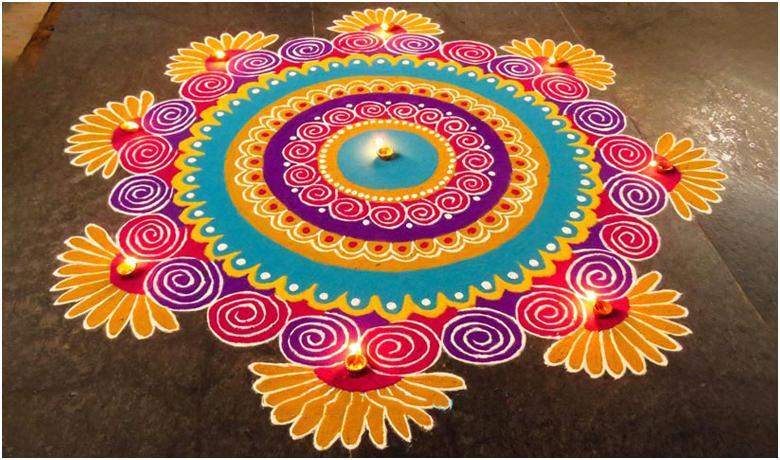
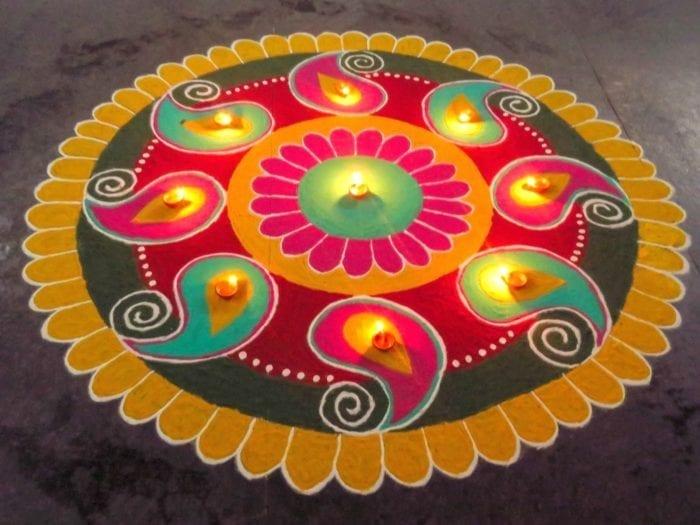
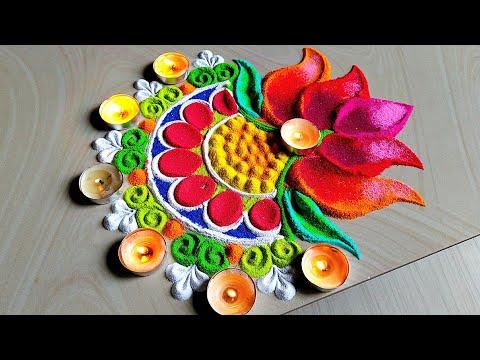
Source: https://blog.talkcharge.com/wp-content/uploads/2020/10/1-1.jpg

Source: http://freenewsalert.in/wp-content/uploads/2018/09/rangoli-1.jpg

Source: https://rangolidesign.com/file/images/9-2018/1-rangoli-designs-diwali-shanthi-sridharan.jpg
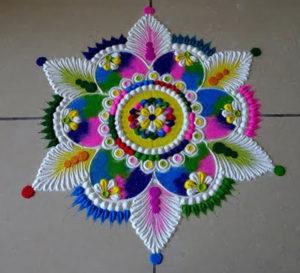
Source: https://creativecraftstudio.in/wp-content/uploads/2019/10/diwali_rangoli_design-2-300×273.jpg

Source: https://resize.indiatv.in/resize/newbucket/1200_675/2018/11/rangoli-1541238184.jpg
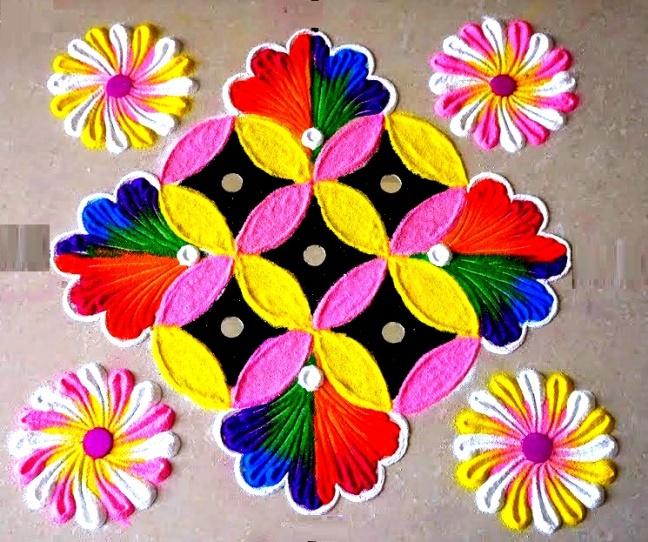
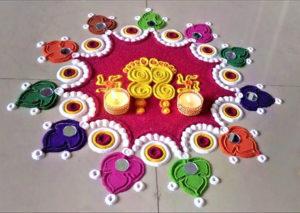
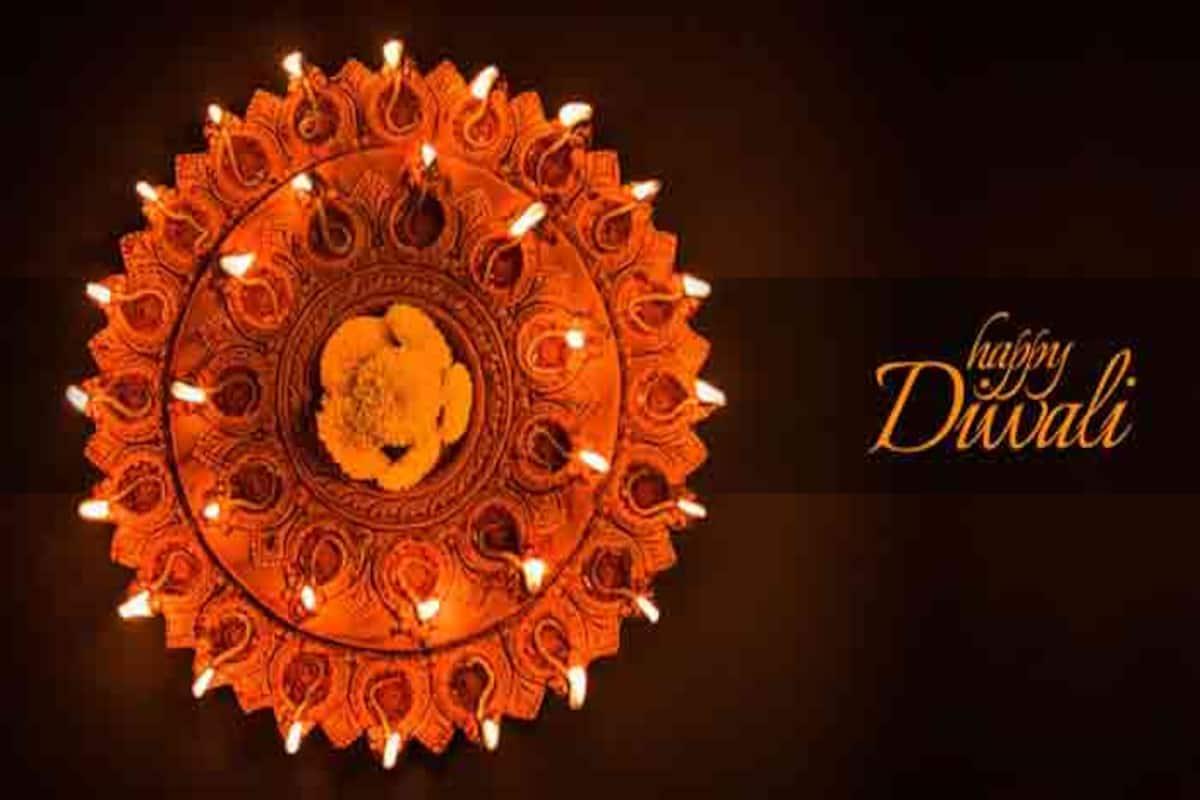
Source: https://static.india.com/wp-content/uploads/2018/11/happy-diwali-1.jpg?impolicy=Medium_Resize&w=1200&h=800
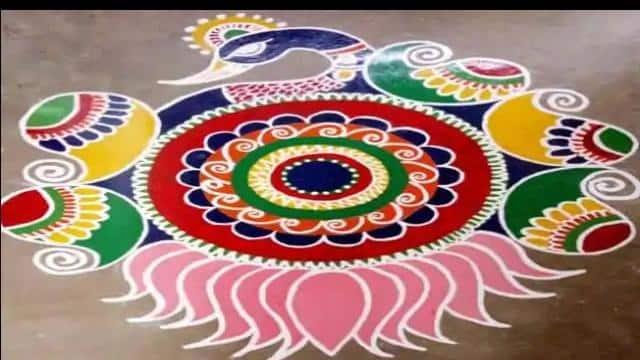
Source:https://images1.livehindustan.com/uploadimage/library/2020/11/13/16_9/16_9_1/choti_diwali_1605234926.jpg

Source: https://c.ndtvimg.com/2020-11/m0ie4jc_diwali-rangoli-designs_625x300_14_November_20.jpg
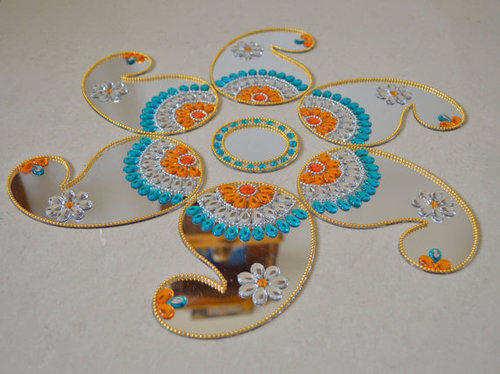
Source: https://static.toiimg.com/photo/79159610.cms
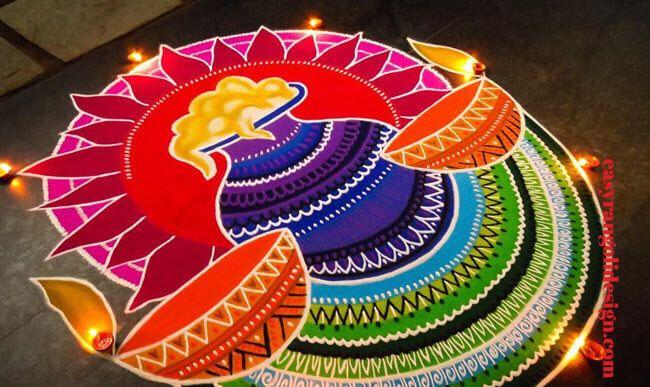
Source: https://i.pinimg.com/736x/8b/4a/22/8b4a22b2a55a4e69c9b5a1439746c684.jpg
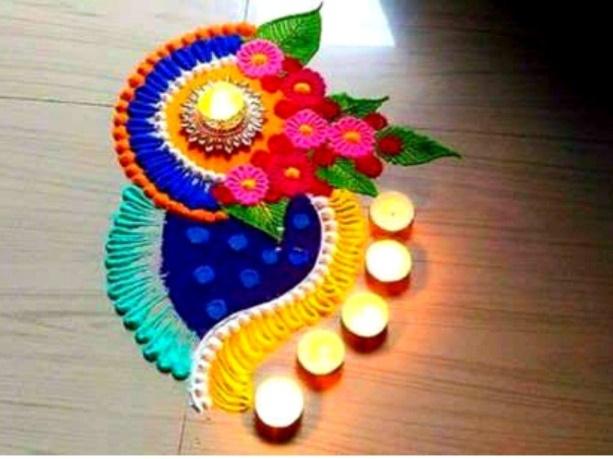
Source: https://static.toiimg.com/photo/71739874.cms
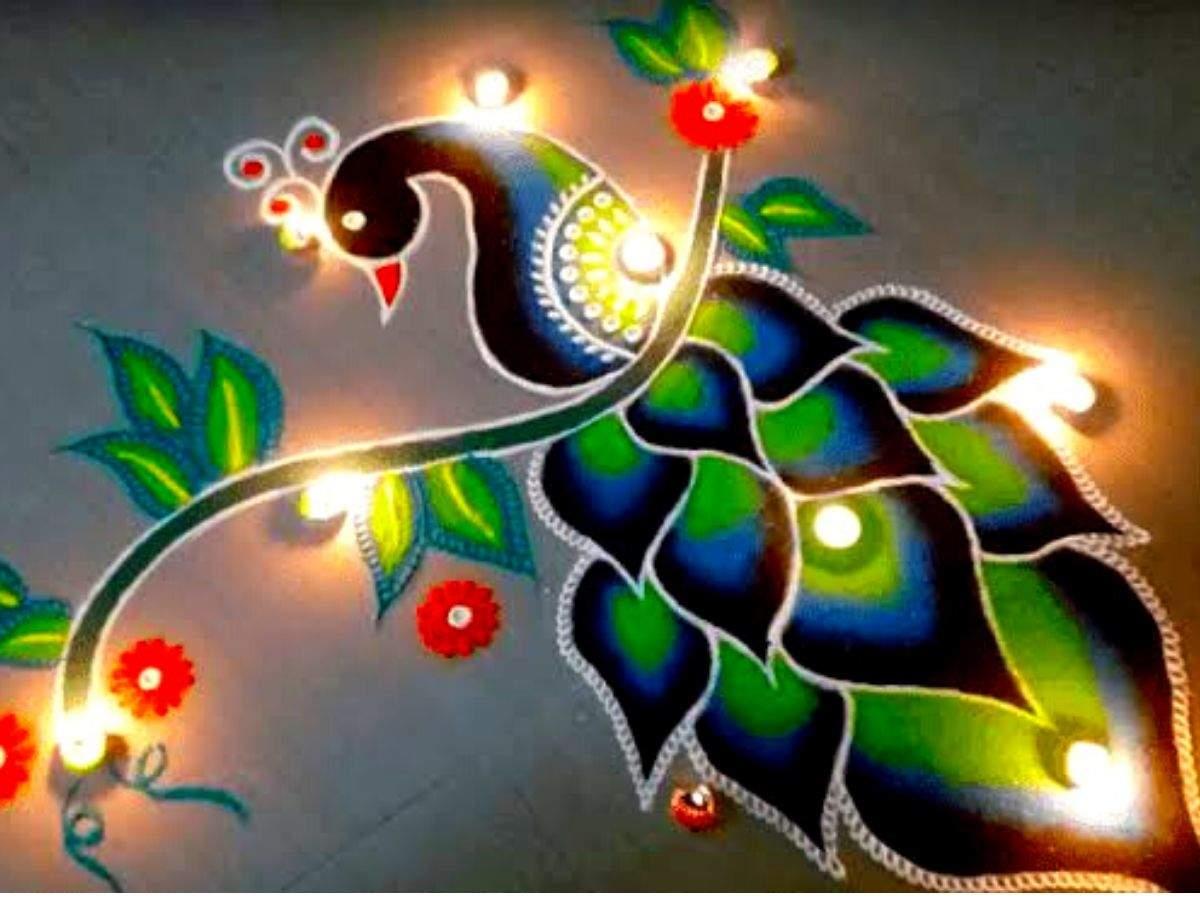

Source: https://static.toiimg.com/thumb/msid-71724194,imgsize-133951,width-1070,height-580,resizemode-75,overlay-toi_sw,pt-32,y_pad-40/71724194.jpg
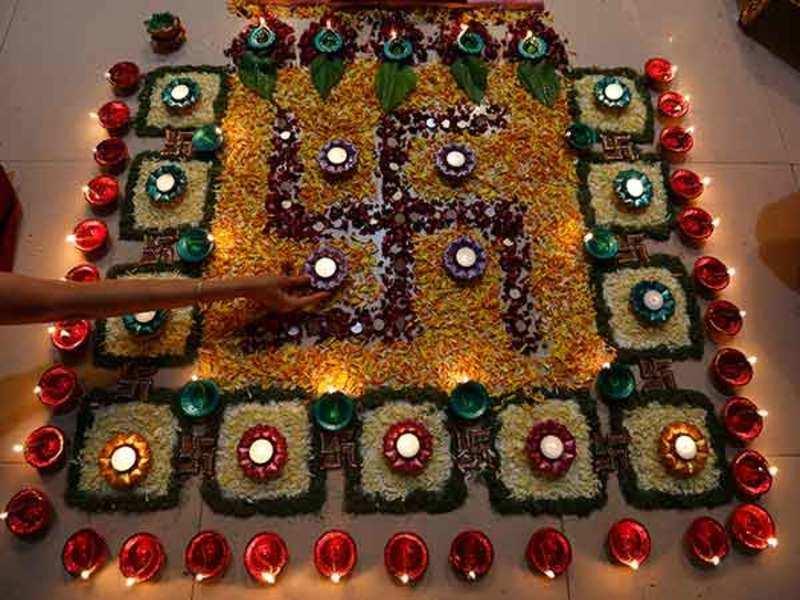
Source: https://static.toiimg.com/thumb/msid-71774695,width-800,height-600,resizemode-75,imgsize-38674,pt-32,y_pad-40/71774695.jpg
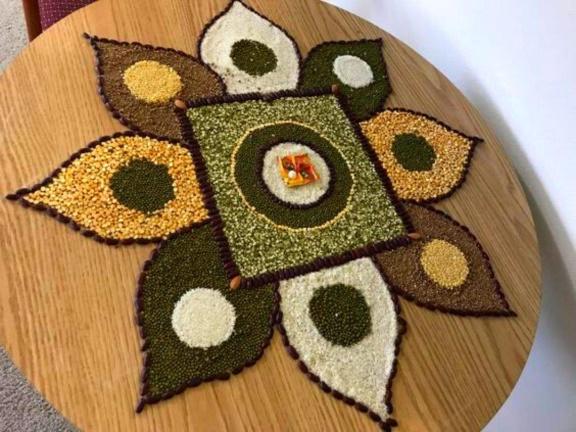
FAQs:
Q. 1: What is Rangoli?
Ans: Rangoli is an art form that originated in India, where women make beautiful patterns on the floor and then colour it using colours.
Q. 2: What is the purpose of Rangoli?
Ans: The purpose of making a rangoli is to capture the positive cosmic energy and dispel the negative energy of the household.
Q. 3: What is the origin of the word ‘rangoli’?
Ans: The world ‘Rangoli’ is the distorted form of the Sanskrit word ‘Rangaawali’, which means ‘row of colours (rang + awali).
Q. 4: What are the different materials used for filling colours in rangoli?
Ans: The different materials used for filling a rangoli include powdered limestone, abeer, grounded rice powder, rice grains, pulses, flowers, diyas, and special powdered colours.
Q. 5: When is rangoli made?
Ans: The Rangoli is made on all special occasions like marriage, festivals, and all happy occasions.

Related Post:
Diwali 2021 in India- Date, History, Significance
Lakshmi Pooja 2021 – date, history, significance, how it is conducted
20 Diwali decoration ideas for Home & office
20 Best Diwali Wishes to share with love ones with images
30 English Diwali Wishes, Quotes and Images
Happy Diwali 2021 – Wishes, Quotes & Images to share
Rice Rangoli Designs For Diwali and Other Festivals
Diwali 2021: मां लक्ष्मी की आरती के साथ करें दिवाली की पूजा

